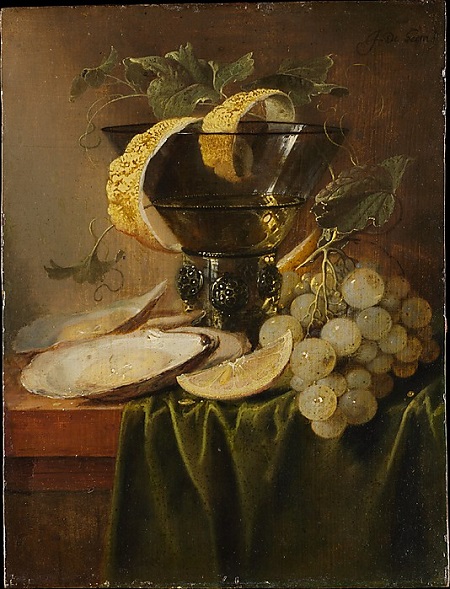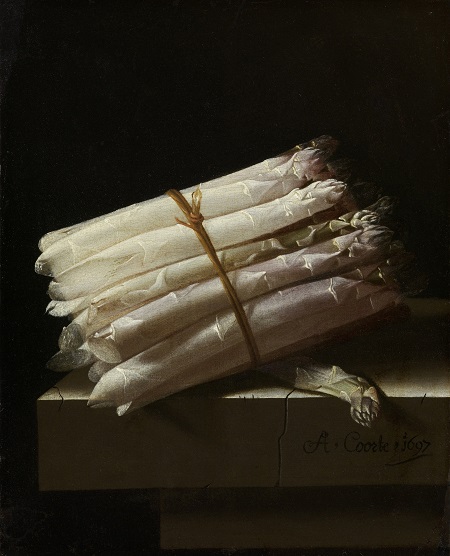Nige reflects on the power and meaning of still life painting, in the light of a book by American poet Mark Doty…
Still Life with Oysters and Lemon is the title of a painting by Jan Davidsz de Heem (above) that hangs in the Metropolitan Museum in New York – or rather it was the title; it was recently changed to Still Life with a Glass and Oysters, ignoring that glorious curl of lemon. But it is still the title of a rather wonderful slim volume – a long essay really – by the American poet Mark Doty.
Towards the end of his essay, Doty ponders the relationship between painting and poetry, seeing both as essentially unparaphrasable; they can only exist as they are, in the form they are in. Whatever he says about a painting will always fall short, will always miss an element of mystery – its ‘poetry’. Part of that poetry, Doty concludes in his beautiful closing sentences, is
the inner life of the dead, held in suspension. It is still visible to us; you can look at the paintings and you can feel it. This is evidence that a long act of seeing might translate into something permanent, both of ourselves and curiously impersonal, sturdy, useful.Of what use, exactly? As advocates of intimacy, as embodiments of paradox, as witnesses to earth, here, this moment, now. Evidence, thus, that tenderness and style are still the best gestures we can make in the face of death.













This was great, Nige. That asparagus looks like heaven
Funny thing asparagus – Manet painted it too…
some sort of sublimation do you think?
Well, it’s hard to avoid the obvious, er, analogy…
That reminds me, this years spagel season is reputedly going to be a cracker. That bunch would probably cost about three Euros fifty, perhaps Manet shopped in German markets.